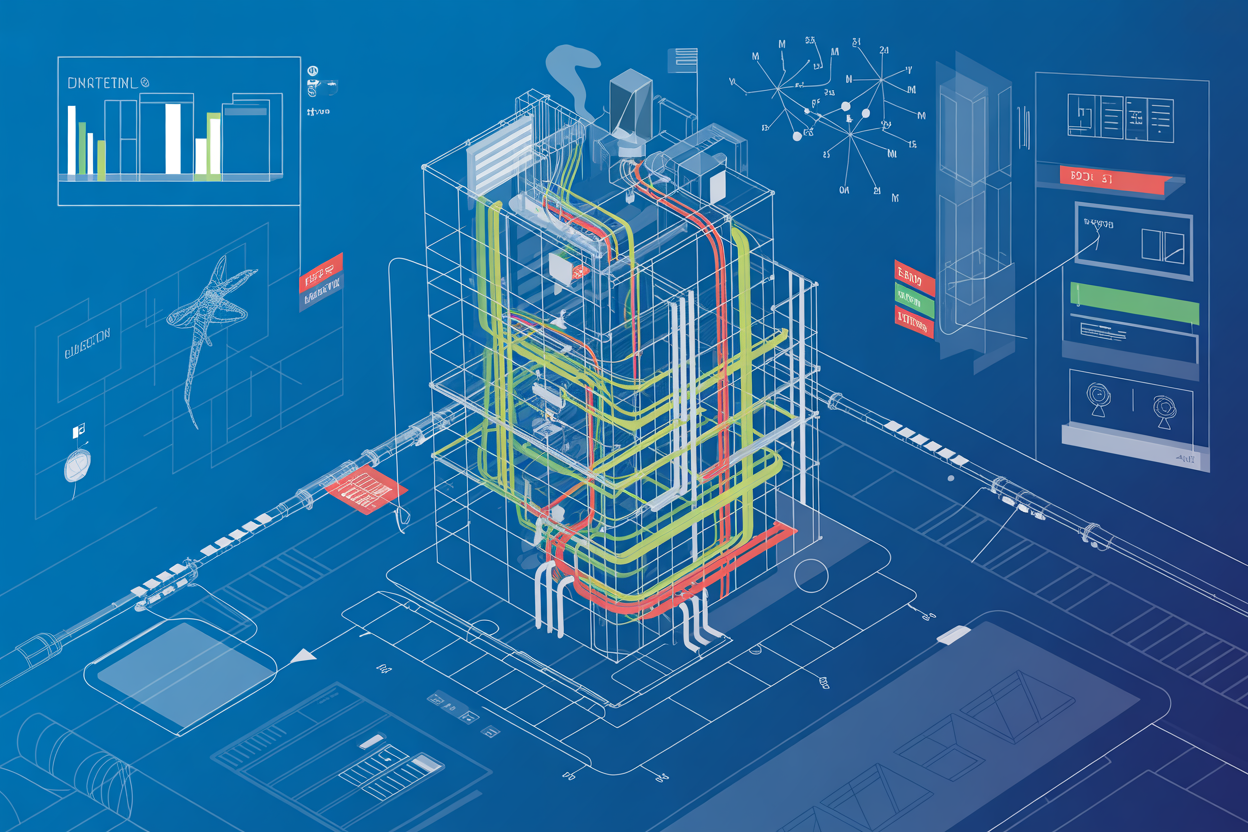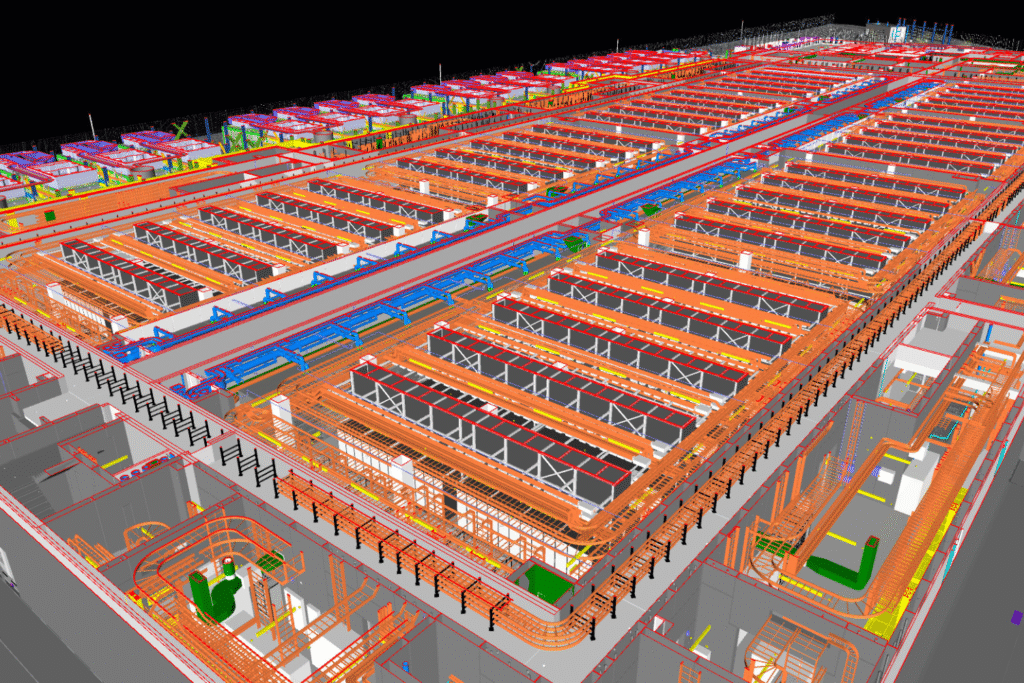
















BIM (Building Information Modelling) is central to how we plan, design, and deliver data centre projects. It enables the creation of intelligent 3D models that integrate architectural, structural, and MEP (Mechanical, Electrical, Plumbing) systems into a single coordinated environment.
With increasing density, power demands, and zero-tolerance for downtime, data centres require precise coordination across every stage of development. That’s where BIM makes the difference.
Data centres are some of the most complex and critical facilities in the built environment. BIM plays a vital role in delivering efficiency, accuracy, and risk reduction by addressing the unique challenges of MEP design in these high-performance environments.

We follow a structured, lifecycle-driven BIM approach to support delivery from concept through to operation.
LOD 100–300 models developed to establish architectural and structural context.
Initial layouts based on cooling load analysis, power demand, and airflow simulation.
Integration of multi-discipline models using Revit, Navisworks, and BIM 360.
Clash detection to resolve conflicts between:
LOD 400 models generated for fabrication of modular MEP elements including:
BIM linked to 4D construction sequencing and 5D cost tracking.
On-site teams use BIM viewers via AR/VR or tablets for precise installation.
As-built BIM model delivered with full asset metadata.
Integrated with BMS and CMMS for:

At Gloster Global, BIM is more than just a modelling tool – it’s a strategic advantage. It enables our teams to deliver highly coordinated, technically robust, and future-proof MEP solutions for the most demanding data centre environments.
Whether you’re planning new build, fit-out, or upgrade works, our BIM-led methodology ensures seamless delivery from day one to day-to-day operations.
Ready to get started? Contact us today for more information.

To provide sustainable MEP Solutions to a global community with an evolutionary mentality.